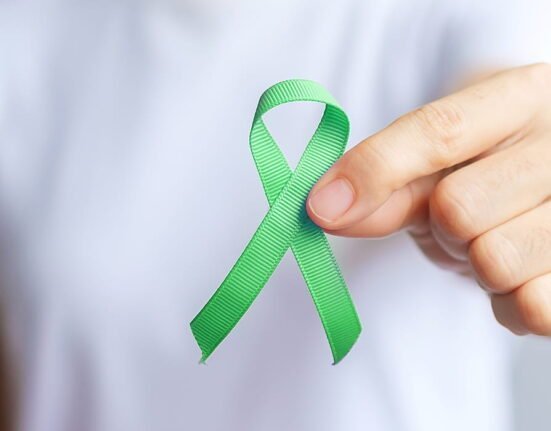At a time when war did not feel so distant anymore, when front lines are streamed live into our pockets and traumatic happenings unfold between memes and texts (Langdon, 2020), the affective power of conflict has seeped into our daily lives in ways previously unimagined. Whether you’re residing in a war zone, part of a displaced family, or a witness thousands of miles away, the psychological toll of war-induced anxiety is becoming increasingly universal.
But today’s expression of this fear isn’t created by bullets or bomb bunkers, it’s created by algorithms, hashtags, and the lightning speed of disinformation. What is War-induced anxiety? War-induced anxiety is an enhanced state of fear, nervousness, and emotional arousal that arises from being exposed to war stress(Almedom, 2004). Unlike ordinary anxiety, which is typically linked with situational stressors and is fairly mild and short-term, war-induced anxiety is more severe and chronic.
Its symptoms can vary from constant worry, panic attacks, intrusive thoughts, emotional numbing, to bodily complaints such as chest constriction or insomnia. This is not just a reaction to existing threats but often goes on even after the war has finished. It relies upon loss of control, invasion of safety, and seeing or being exposed to violence and death.
The fear is internalised, and it constructs a worldview based on how the world is perceived. We will further explore how war-induced anxiety is manifesting in the modern digital age, where social media has become both a lifeline and a stressor. We’ll get more into how people cope, what makes this anxiety unique, and what tools are helping individuals protect their mental health while staying informed in an emotionally overloaded world.
The Contrast Between Adaptive and Pathological Anxiety
It should be remembered that some anxiety during wartime is a normal, adaptive response; it keeps one’s wits about one and enables one to make quick judgments in dangerous situations. But once the response turns chronic or disproportionate, it turns pathological. Now, anxiety is not protective but incapacitating, causing interference with function in everyday life and general well-being (Rosen & Schulkin, 1998).
Consequences Beyond the Mind
Anxiety not only affects the mind it also influences every part of life. Anxiety brought about by war typically makes individuals give other people issues with relationships, school, employment and peer groups. (Ondishko,1972). Physical health can be harmed due to persistent stress, which exposes individuals to diseases like hypertension, heart disease, and autoimmune diseases. In society, undiagnosed anxiety has the potential to bring about social fragmentation, suspicion, and even violent patterns.
Coping Mechanisms for War-Anxiety in the Age of Social Media
Social Media Boundaries: Filter the feed
Round-the-clock exposure to violent images from media that may come with affecting mindsets, generating nasty opinions regarding violence, disrupting changed news alerts, and apocalypse narratives might spark or worsen anxiety symptoms (MacWillie, 2022). Subscribe to trusted news outlets or experts reporting responsibly. Use platform tools to limit exposure.
Doomscrolling, which is continuous consumption of misinformation, may result in anger, despair, and difficult-to-explain loops of anxiety. You should plan specific times of day to read the news and not read it before going to bed. Utilise screen-time monitor programs or browser plugins to restrict time on news and social sites. As it is very much important to stay updated with the news, self-awareness about the extent that makes us mindful, not extremely anxious, is what we’re supposed to focus on.
Stay informed during crisis times, but excessive exposure has a psychological cost. Try to choose one or two trustworthy news sources after conducting research and analysis of the content being posted. Avoid sensationalised headlines and pay attention to how and when you take updates.
Misinformation and manipulated content spread like wildfire in conflict, causing confusion and panic. You should check the news on credible fact-checking websites. Social media not only adds to anxiety but can also be a source of healing and solidarity. Joining supportive online communities will help(Wilson & Maceviciute, 2025). Record your feelings in safe environments or journaling where you write your mind off.
Assess your peer group and environments where you can discuss your feelings openly, not where you feel you are being misunderstood, but where you feel safer and less anxious. Physiological anxiety evoked by screen exposure accelerated the heart, short breathing, hazy mind. Use apps for guided breathing, meditation, or grounding practice. Brief 5-minute sessions also suffice to break the cycle of stress.
Social media offers a misleading feeling of connection sometimes, but meaningful offline connections more effectively manage emotions. Try to get out with family, talk to trusted friends, or engage with local activities. These can offer emotional grounding and distraction from screen anxieties.
Why is it necessary to treat war-induced anxiety
It is important to know how anxiety builds up over time among war-affected populations in order to create effective mental health interventions. A systematic review by Bogic et al. revealed that 20.3% to 88% of refugees of war continued to experience anxiety disorders five years post-displacement. This highlights the necessity of long-term psychological treatment well after the end of armed conflict (Bogic et al, 2015).
Intergenerational war-related anxiety transmission is another serious concern. Research by Sangalang and Vang has shown that war refugee children are at greater risk of anxiety and depression, which implies war’s psychological trauma to transcend generations. These effects are more pronounced in societies that are under ongoing discrimination and marginalisation in the host countries, implying the prolonged psychological toll of war and forced displacement. While wartime anxiety, sometimes, is an adaptive response to an actual threat, sometimes it can be pathological.
There is a critical need for measuring and implementing interventions that can mitigate the harmful impact of conflict-induced anxiety. Evidence has shown the effectiveness of digital and community-level interventions, such as mobile and internet interventions. In addition, treatments traditionally used for PTSD, such as cognitive behaviour therapy (CBT), mindfulness strategies, trauma-sensitive care, and support groups, also need to be carefully tested during wartime contexts. (Lim et al. 2022)
Conclusion
As shifting global conflicts become interwoven with other crises, there is a need for more research to address the mental health concerns of impacted war populations. War anxiety is widespread and has resulted in an increased rate of incidence. It affects a broad population, including civilians, military, health workers, humanitarians, refugees, and even those remotely
removed from the conflict. War anxiety varies from one individual to another and is determined by personal coping strategies as well as socio-political and socio-economic factors. Often, war anxiety also presents itself in the context of other psychiatric illnesses such as depression, insomnia, and PTSD, and may also have implications for physical health and well-being in the long term.
There is encouraging evidence that neighbourhood-based and internet interventions for mental health can help reduce the burden of war-related anxiety. Future work for researchers and clinicians will be to develop low-cost, cost-effective interventions that are tailored to the particular needs of the most vulnerable groups (Zhang & Li, 2025).
FAQs
Q1: Can individuals who do not reside in war zones still suffer from war-induced anxiety?
Yes. Due to live media coverage and the internet, even those who are distant from conflict areas can feel submerged, intimidated, or disturbed by war-related information. This is referred to as vicarious trauma, and it can lead to anxiety, insomnia, and emotional exhaustion.
Q2: How can I keep myself updated without feeling perpetually worried?
Establish boundaries. Restricting the frequency of checking the news, sticking with reputable sources, avoiding social media, and practice mindfulness can also keep you in touch with reality.
Q3: What type of support is there if war anxiety is impacting my daily life?
Help is out there. Online therapy sites, mental health apps, and local and virtual support groups can provide convenient assistance. If symptoms don’t go away, it’s crucial to contact a licensed mental health counsellor.
References +
Hajek, A., Kretzler, B., & König, H. H. (2023). Fear of war and mental health in Germany. Social psychiatry and psychiatric epidemiology, 58(7), 1049-1054. https://link.springer.com/article/10.1007/s00127-022-02394-9
Almedom, A. M. (2004). Factors that mitigate war-induced anxiety and mental distress. Journal of Biosocial Science, 36(4), 445-461. https://www.cambridge.org/core/journals/journal-of-biosocial-science/article/factors-that-mitigat e-warinduced-anxiety-and-mental-distress/7B69D9DF71A465EDBF53F25559D1083A
Rosen, J. B., & Schulkin, J. (1998). From normal fear to pathological anxiety. Psychological review, 105(2), 325. https://psycnet.apa.org/record/1998-01102-006
Lim, I. C. Z., Tam, W. W., Chudzicka-Czupała, A., McIntyre, R. S., Teopiz, K. M., Ho, R. C., & Ho, C. S. (2022). Prevalence of depression, anxiety and post-traumatic stress in war-and conflict-afflicted areas: A meta-analysis. Frontiers in psychiatry, 13, 978703. https://www.frontiersin.org/articles/10.3389/fpsyt.2022.978703/full
Amsalem, D., Haim-Nachum, S., Lazarov, A., Levi-Belz, Y., Markowitz, J. C., Bergman, M., … & Neria, Y. (2025). The effects of war-related experiences on mental health symptoms of individuals living in conflict zones: a longitudinal study. Scientific Reports, 15(1), 889. https://www.nature.com/articles/s41598-024-84410-3
Ondishko, J. J. (1972). A view of anxiety, fear and panic. Military Affairs: The Journal of Military History, including Theory and Technology, 58-60. https://www.jstor.org/stable/1984434?casa_token=Q2yB0mBW9IwAAAAA:lzJag3vgAYPA1yM ulrWxzYirf7G37osnpRsMirBgvfujapiy8kTvvEmAVq0HBNw0-sMASEoHKMWbM7kThfQTK8549VEynCFwRrqz166CNx8VeL1k6eIrg
Zhang, S. X., & Li, L. Z. (2025). War anxiety: a review. Current Psychiatry Reports, 27(2), 140-146. https://idp.springer.com/authorize/casa?redirect_uri=https://link.springer.com/article/10.1007/s11 920-024-01583-4&casa_token=BHcXRVTCKqgAAAAA:wmyX-LQ1lgefKAqcom8IeMliTu9m bvriPQCgHyUf1RxYjpKTPGcVRkaAuPy4j4d6CzJMHcgR7phzkDnrjxg
Christie, D. J., & Montiel, C. J. (2013). Contributions of psychology to war and peace. American Psychologist, 68(7), 502. https://psycnet.apa.org/record/2013-35832-002
Zikic, O., Nikolic, G., Krstic, M., Randjelovic, D., & Jeredic, B. (2015). Anxiety, depression and childhood war trauma. European Psychiatry, 30, 574. https://www.sciencedirect.com/science/article/pii/S0924933815304557
Langdon, D. (2020). Anxiety in the digital age. The Palgrave handbook of contemporary Gothic, 973-984. https://link.springer.com/chapter/10.1007/978-3-030-33136-8_57
Wilson, T. D., & Maceviciute, E. (2025). Information seeking in a time of war: coping with stress in Lithuania during the Russia/Ukraine war. Journal of Documentation, 81(7), 31-62. https://www.emerald.com/insight/content/doi/10.1108/JD-06-2024-0156/full/html MacWillie, J. (2022). Digitalisation of war. Materialising Digital Futures: Touch, Movement, Sound and Vision, 269. https://books.google.com/books?hl=en&lr=&id=qPhXEAAAQBAJ&oi=fnd&pg=PA269&dq=di gital+anxiety+war&ots=H4ae4x5SE2&sig=5Z7toR_eHswNX4bpydXQ08ac_FM
Bogic, M., Njoku, A., & Priebe, S. (2015). Long-term mental health of war-refugees: a systematic literature review. BMC international health and human rights, 15, 1-41. https://link.springer.com/article/10.1186/s12914-015-0064-9













Leave feedback about this